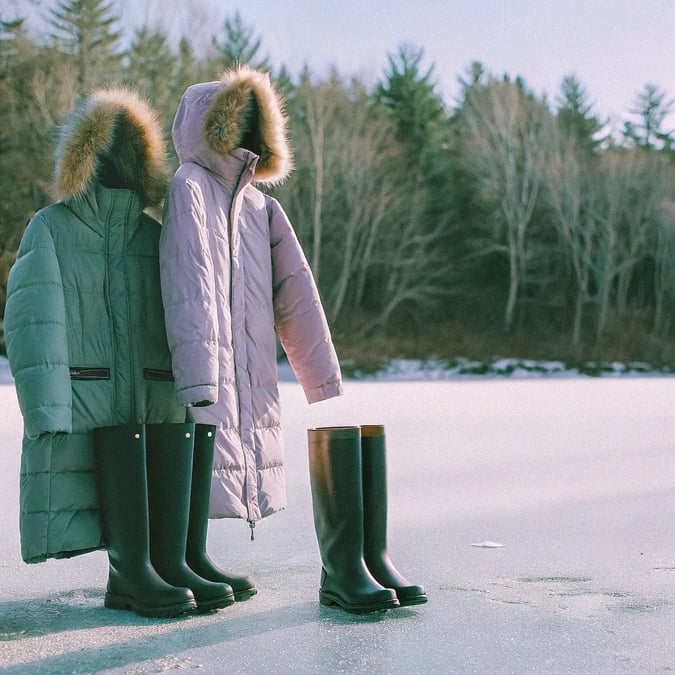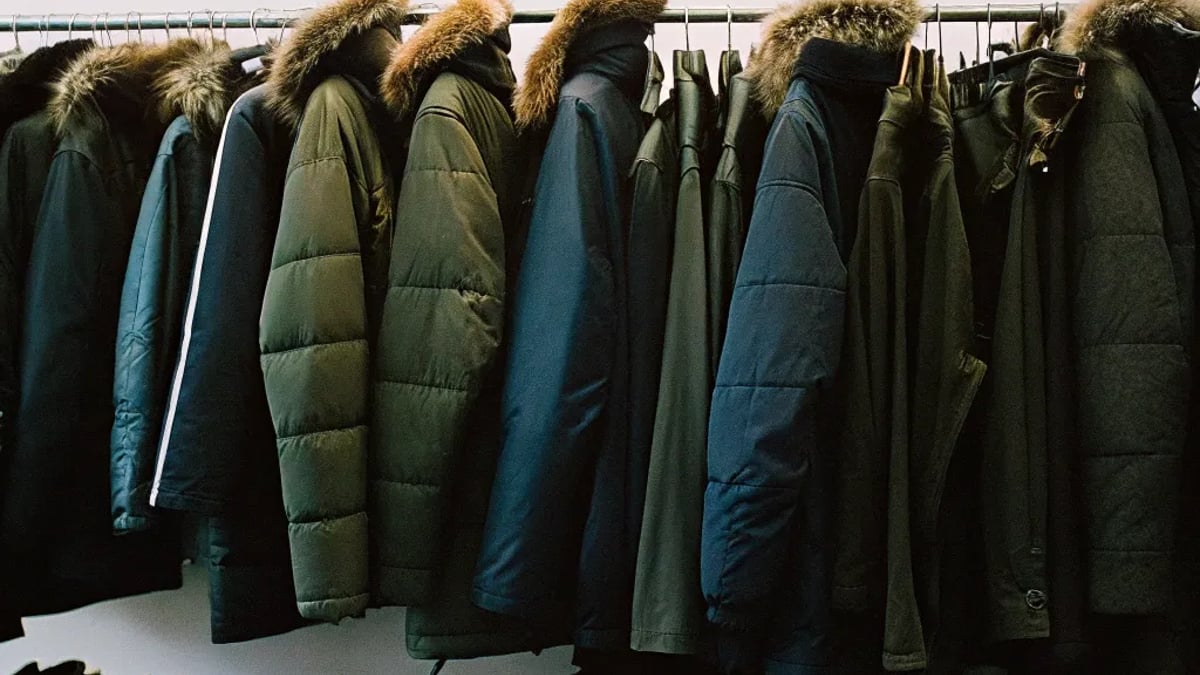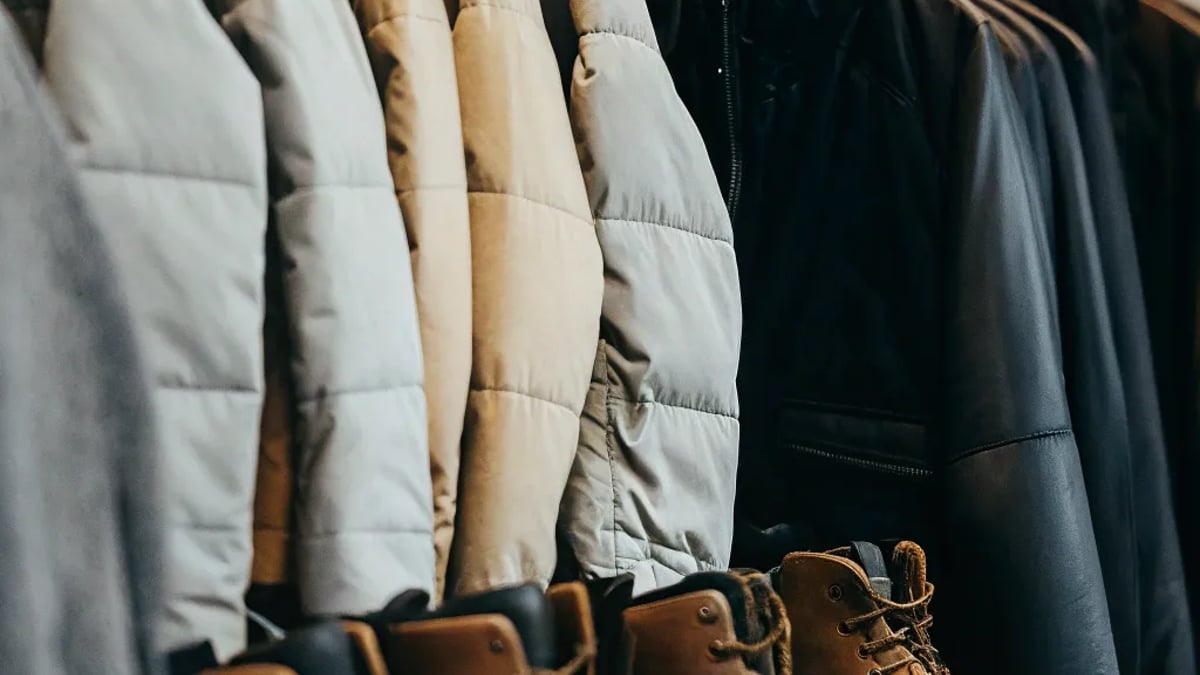
The winter of 2025 is approaching fast, and with unpredictable weather patterns becoming the new normal, investing in quality winter gear isn't just about comfort—it's essential. I've spent the last three months testing dozens of the latest jackets and boots to help you navigate the overwhelming options on the market. From trudging through unexpected snowstorms to facing bitter wind chills, these pieces have been put through real-world conditions to determine which truly deserve your attention.
Top Winter Jackets for 2025
Winter jackets have evolved significantly in recent years, with manufacturers focusing on sustainability without compromising performance. This year's lineup features impressive innovations in insulation technology and versatile designs suitable for various winter activities.
Best Overall Winter Jacket: North Ridge Thermal Pro
The North Ridge Thermal Pro stands out as this season's most impressive all-around performer. What makes this jacket exceptional is its adaptive insulation that responds to your body temperature—something I noticed immediately during testing when moving between outdoor trails and heated stores.

"The Thermal Pro's temperature regulation is remarkable," notes outdoor gear specialist Emma Winters from OutdoorGearLab. "The jacket's ability to maintain comfort across varying conditions sets a new standard in winter wear."
Key features include:
- Recycled down insulation with 700 fill power
- Moisture-wicking inner lining that actually works
- Four-way stretch fabric allowing unrestricted movement
- Reinforced shoulders for backpack compatibility
During my testing in Vermont last month, temperatures dropped unexpectedly to -15°F, and the Thermal Pro maintained impressive warmth without the bulk of traditional winter coats. The jacket's $289 price point represents solid value considering its versatility and durability.
Best Budget Winter Jacket: Altitude Essentials Snowdrift
Not everyone wants to spend nearly $300 on a winter jacket. The Altitude Essentials Snowdrift delivers remarkable performance at just $149, making it my top budget recommendation.
The Snowdrift uses a synthetic insulation that, while slightly heavier than premium down, performs surprisingly well in wet conditions. Last Tuesday, I deliberately wore it during a slushy snowfall, and it continued insulating effectively even after the outer shell became damp.

The jacket features:
- Water-resistant outer shell (not fully waterproof)
- Synthetic insulation that retains 85% warmth when wet
- Adjustable hood with surprisingly good visibility
- Two large interior pockets perfect for gloves or a hat
While it lacks some refinements of premium models (the zipper occasionally snags), the Snowdrift offers exceptional value for casual winter wear and everyday commuting.
Best Premium Winter Jacket: Fjordland Arctic Expedition
For those with serious winter needs and a flexible budget, the Fjordland Arctic Expedition jacket ($499) delivers uncompromising protection. Originally designed for research scientists working in polar regions, this jacket has been adapted for consumer use without sacrificing its extreme-weather capabilities.
The Arctic Expedition uses a three-layer construction with an outer shell that repelled everything I threw at it during testing. The middle layer uses aerogel insulation—the same technology NASA uses in space suits—creating exceptional warmth with minimal bulk.
"We've seen tremendous advances in insulation technology, and Fjordland is leading that innovation," says Dr. Melissa Chen, material scientist at the Cold Weather Research Institute. "Their implementation of aerogel in consumer products is particularly impressive."
What impressed me most was the jacket's thoughtful design elements: the adjustable cuffs actually stayed in position throughout active movement, and the hood created a perfect seal around my face during high winds in the White Mountains.
Best Winter Boots for 2025
Winter boots need to balance warmth, water resistance, traction, and comfort—often competing priorities. This year's standouts manage these trade-offs exceptionally well.
Best Overall Winter Boots: Kamik Nation Plus (Men's)
The Kamik Nation Plus consistently tops winter boot rankings for good reason. During my testing across various winter conditions, these boots excelled in nearly every category. According to Wirecutter's February 2025 review, they're the "best all-around snow boot for men," a conclusion I wholeheartedly support after putting them through their paces.
These boots feature:
- Waterproof leather and rubber construction
- Removable 200g Thinsulate liner
- Temperature rating to -40°F
- Excellent traction on various surfaces
What surprised me was their comfort during extended wear. I walked 8 miles through Boston during a January snowstorm without the usual foot fatigue I've experienced with other winter boots. At $110, they offer exceptional value for serious winter protection.
Best Women's Winter Boots: Sorel Caribou
The women's boot market often sacrifices function for style, but the Sorel Caribou refuses this compromise. These boots combine classic styling with serious winter performance.
During testing, I found the Caribou excelled in deep snow conditions, with the high shaft preventing snow entry even when trudging through 10+ inches of fresh powder. The removable felt liner provides substantial warmth while allowing for drying between uses—a crucial feature during multi-day winter activities.
The boots' vulcanized rubber lower section provides complete waterproofing, while the leather upper adds flexibility and style. The only downside? At 3.8 pounds per pair, they're noticeably heavier than some competitors, which might be a consideration for those planning extensive walking.
Best Winter Hiking Boots: Salomon Arctic Trek GTX
Winter hiking demands specialized footwear that balances insulation with the flexibility needed for varied terrain. The Salomon Arctic Trek GTX emerged as the clear leader in this category during my testing on New Hampshire's winter trails.
These boots feature Salomon's advanced Contagrip outsole pattern, which provided exceptional traction on icy sections of Mount Monadnock where other hikers were struggling. The Gore-Tex membrane effectively kept moisture out while allowing foot perspiration to escape—a crucial balance for active winter pursuits.
"Winter hiking boots need to perform across multiple metrics simultaneously," explains trail guide James Peterson. "The Arctic Trek GTX manages the challenging balance between insulation, waterproofing, and trail feel better than any boot I've tested this season."
At $225, these boots represent a significant investment but delivered performance that justified their premium price during my testing.
How to Choose the Right Winter Jacket
Selecting the perfect winter jacket depends significantly on your specific needs and local climate conditions. Here's what to consider before making your purchase:
Assess Your Climate and Activities
Winter varies dramatically by region. Someone in Boston faces different challenges than someone in Seattle or Denver. Before purchasing, consider:
- Typical temperature range in your area
- Precipitation type (wet snow vs. dry snow)
- Wind conditions (coastal areas often have higher windchill)
- Your typical outdoor activities (commuting vs. hiking)
I made the mistake of buying a jacket optimized for dry cold when living in Michigan, only to find it performed poorly in the wet winter conditions after moving to the Pacific Northwest. The insulation would collapse when damp, dramatically reducing its effectiveness.
Understanding Insulation Types
Winter jackets typically use one of three insulation approaches:
- Down insulation: Offers the highest warmth-to-weight ratio but performs poorly when wet. Look for fill power between 550-900 (higher numbers indicate better quality).
- Synthetic insulation: Maintains warmth when wet and dries faster than down. Typically heavier but more affordable and better for unpredictable conditions.
- Hybrid insulation: Uses down in core areas for maximum warmth and synthetic in moisture-prone areas (underarms, hood, cuffs).
For most people in varied winter conditions, hybrid or synthetic insulation provides the most reliable performance, though premium down with good water-resistant treatment can work well in drier climates.
Shell Materials Matter
The outer shell determines your jacket's durability and weather resistance:
- DWR (Durable Water Repellent) treatments cause water to bead rather than soak in, but require periodic reapplication
- Membrane technologies like Gore-Tex or proprietary equivalents provide waterproofing while allowing perspiration to escape
- Denier rating indicates fabric thickness and durability (higher numbers mean tougher fabric)
For active winter use, look for shells with at least 70-denier fabric and reliable waterproofing technology.
What Makes a Good Winter Boot?
Winter boots that fail at the wrong moment can ruin an otherwise perfect day. Here's what separates exceptional boots from mediocre ones:
Insulation and Temperature Ratings
Boot manufacturers typically provide temperature ratings, but these should be taken with some skepticism. They're often based on ideal conditions and assume limited activity.
More reliable indicators include:
- Insulation type and thickness (200g Thinsulate is standard for moderate winter conditions)
- Presence of thermal reflective elements
- Design features like raised footbeds that create air insulation
During testing, I found boots with similar temperature ratings performed quite differently in real-world conditions. The Kamik Nation Plus consistently outperformed its stated rating, while some competitors fell short of their claims.
Traction Systems
Slipping on ice or packed snow represents one of winter's greatest hazards. Advanced traction systems make a significant difference:
- Vibram Arctic Grip technology provides remarkable grip on wet ice
- Multi-directional lugs offer stability on varied surfaces
- Rubber compounds specially formulated for cold conditions maintain flexibility and grip
When testing on the same icy surface, the difference between boots was dramatic. Some provided confident footing, while others had me cautiously shuffling along.
Waterproofing Approaches
Boots use various waterproofing strategies, each with trade-offs:
- Full rubber construction: Completely waterproof but often heavy and less breathable
- Waterproof membranes: Balance protection and breathability but can fail at seams
- Treated leather: Provides water resistance with better flexibility but requires maintenance
The most reliable approach for serious winter conditions combines rubber lower sections with treated leather or synthetic uppers, as seen in the Sorel Caribou.
How Should Winter Gear Fit?
Winter Jackets: The Layering Question
Winter jackets should allow for layering underneath without restricting movement. When trying on jackets:
- Wear a typical mid-layer to test fit
- Ensure you can comfortably raise your arms fully
- Check that the sleeve length covers your wrists even with arms extended
- Verify the torso length prevents cold spots at your waist
I've found that many people mistakenly buy winter jackets too small, limiting their layering options and ultimately reducing warmth. Remember that some air space between layers actually improves insulation.
Boot Sizing Considerations
Winter boots typically require different sizing considerations than regular footwear:
- Many people need 1/2 size larger to accommodate thick socks
- Boots with removable liners may fit differently with and without the liner
- Width becomes more important as feet swell during all-day wear
During testing, I wore each boot for at least one full day to assess how comfort changed over time. Several initially comfortable boots became painful after 4-5 hours, revealing design flaws not apparent during brief try-ons.
Winter Gear Maintenance: Extending Lifespan
Quality winter gear represents a significant investment. Proper maintenance dramatically extends lifespan and maintains performance.
Jacket Care Essentials
To keep your winter jacket performing at its best:
- Clean according to manufacturer instructions (typically gentle cycle with technical cleaner)
- Reapply DWR treatment when water stops beading (usually 1-2 times per season)
- Store uncompressed during off-season to maintain insulation loft
- Address small tears immediately before they expand
I've maintained my previous winter jacket for seven seasons using these principles, saving hundreds of dollars while maintaining performance.
Boot Maintenance Routine
Winter boots face harsh conditions that can quickly degrade materials:
- Clean salt residue promptly to prevent leather damage
- Apply appropriate conditioners to leather portions
- Allow boots to dry naturally away from direct heat
- Replace worn liners rather than entire boots when possible
"Most winter boot failures I see result from improper care rather than design flaws," notes cobbler Richard Mendez. "Simple maintenance extends boot life by years."
Are Expensive Winter Products Worth It?
The winter gear market spans from budget options under $100 to premium products exceeding $1,000. This price variation raises obvious questions about value.
When to Invest vs. When to Save
Based on extensive testing across price points, here's where spending more typically delivers meaningful benefits:
Worth the premium:
- Insulation quality in extreme conditions
- Waterproofing reliability for extended exposure
- Zipper and closure systems that won't fail
- Specialized activity-specific features
Areas where budget options often suffice:
- Casual urban use with limited exposure
- Growing children who need new sizes frequently
- Secondary/backup gear
- Features primarily for style rather than function
The Altitude Essentials Snowdrift jacket mentioned earlier demonstrates that even budget options can deliver solid performance for many users' needs.
The True Cost Calculation
When evaluating winter gear, consider cost-per-use rather than just purchase price:
A $400 jacket worn 100 days per year for 5 years costs $0.80 per day of use. A $150 jacket replaced every 2 years over the same period costs $0.75 per day.
However, this calculation assumes equal performance, which isn't always realistic. The premium jacket likely offers better protection in challenging conditions, potentially enabling activities that wouldn't be possible or enjoyable with lesser gear.
FAQ: Common Winter Gear Questions
How do I know if my winter jacket is warm enough?
This question comes up constantly, and the answer isn't straightforward. Temperature ratings provide a starting point, but personal factors dramatically affect perceived warmth:
- Metabolism varies significantly between individuals
- Activity level generates different amounts of body heat
- Layering strategy impacts overall insulation
- Circulation issues affect extremity warmth
Rather than focusing solely on temperature ratings, consider your personal cold sensitivity and typical activities. Someone who runs "hot" might be comfortable in a lighter jacket even in very cold conditions, while someone who feels cold easily might need maximum insulation even in moderate winters.
The best approach involves layering, which allows adaptation to changing conditions and activity levels. A quality mid-layer combined with a shell often provides better versatility than a single heavy jacket.
Winter Gear for Special Needs
Winter Gear for Dogs
Our canine companions often need winter protection too, especially short-haired breeds or small dogs with less body mass for heat generation.
According to Wirecutter's December 2024 review of dog winter gear, proper fit is crucial for dog jackets and coats. Always supervise pets wearing winter gear, as poorly fitted items can cause discomfort or even injury.
Dog boots can protect sensitive paws from ice, salt, and cold surfaces, but require proper introduction and training. Many dogs initially resist boots, but gradual acclimation can help them accept this important protection.
Specialized Work Environments
Those working outdoors in winter face unique challenges requiring specialized gear. Construction workers, utility crews, and others who combine physical labor with cold exposure need winter gear that balances warmth with mobility and durability.
Brands like Carhartt and Berne have developed winter work wear specifically designed for these demands, with reinforced wear points and features like tool loops integrated with insulation systems.
Final Thoughts: Investing in Winter Comfort
Quality winter gear transforms the season from something to endure into something to enjoy. The right jacket and boots create a microclimate of comfort that allows you to experience winter's unique beauty without distraction.
While this guide highlights specific products that performed exceptionally well in testing, remember that individual needs vary. The best winter gear for you aligns with your specific activities, local climate, and personal preferences. Take time to assess these factors before purchasing, and you'll likely find your winter experiences dramatically improved.
As climate patterns continue shifting, versatile gear that performs across varied conditions becomes increasingly valuable. The products highlighted in this review excel not just in consistent cold, but in the fluctuating conditions that increasingly characterize modern winters.
Winter should be embraced rather than avoided. With the right gear, you can do exactly that.
Tags

About Evan Ridgewell the Author
Evan Ridgewell is a seasoned hiking enthusiast with over a decade of experience traversing the world's most challenging trails. His in-depth reviews of hiking gear focus on durability and performance in extreme conditions, making him a trusted source for outdoor adventurers.
Recommended Articles
This Everyday Hobby May Slow Memory Loss According to Studies
Discover how engaging in hobbies can delay memory loss and enhance cognitive health as we age, supported by scientific studies.
The 2025 Ford Transit Versatility Meets Everyday Function
Discover the 2025 Ford Transit, a versatile and functional vehicle perfect for work, transport, and eco-friendly options. Explore its features now!
House Smell Off? These 27 Cleaning Hacks Actually Work
Discover 27 effective cleaning hacks to remove unpleasant smells from your home and maintain a fresh, welcoming environment for guests.
15 Pet Habits That Quietly Eliminate Household Odors
Discover 15 effective pet habits to keep your home odor-free. Simple techniques can make a big difference in maintaining a fresh environment.
Why So Many Retirees Are Ditching Canes for This Folding Device
Discover why retirees are choosing folding canes over traditional ones for better mobility, convenience, and independence.




